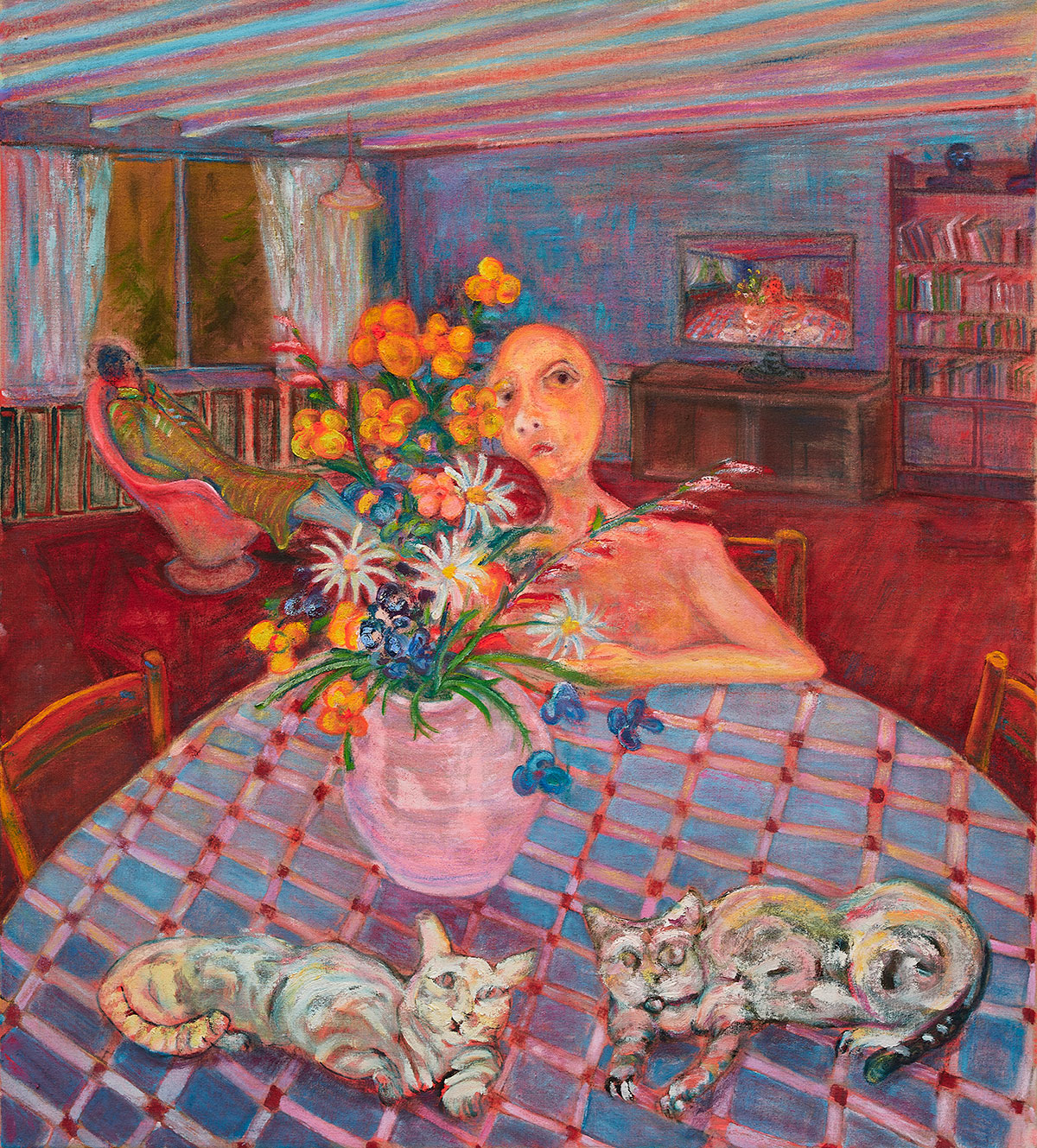PREVIEW: Andriu Deplazes-Burning Green
 In his works Andriu Deplazes creates a dreamlike world between the and the Apocalypse. Sexuality or terrorism appear to be particularly tangible topics. The artist depicts androgynous beings exhibiting unconditional lust, allowing them to lose themselves free of moral conventions. Despite their clear motives, the works refuse themselves to real events. In his reduction to the fragile and the fleeting, his works release our deep-seated inner images.
In his works Andriu Deplazes creates a dreamlike world between the and the Apocalypse. Sexuality or terrorism appear to be particularly tangible topics. The artist depicts androgynous beings exhibiting unconditional lust, allowing them to lose themselves free of moral conventions. Despite their clear motives, the works refuse themselves to real events. In his reduction to the fragile and the fleeting, his works release our deep-seated inner images.
By Dimitris Lempesis
Photo: Collezione Maramotti Archive
Andriu Deplazes’s project “Burning Green” presents a group of more than thirty works, most of them made specifically for the show, Deplazes extends his formal and conceptual approach to painting, working on a larger scale and with new methods of production and presentation. The dramatic imagery evoked by the title, explored in an original style that draws on various manners and moods of late 19th and early 20th century Western painting (Art Deco, Ernst Ludwig Kirchner, Ferdinand Hodler, Pierre Bonnard, Käthe Kollwitz, Francis Bacon, Nancy Spero) is linked to the characteristic concerns and techniques of Deplazes’s work. The green in question could be an allusion to the landscape, to the environmental crisis and to the aggressive exploitation of resources, but also to the military themes that turn up in some of the new works, or the traces of fluorescent colour often used by this artist. Within a layout of the space conceived especially for this exhibition, Deplazes fills the gallery with sculptures and the walls and windows with paintings on canvas and works on paper or plexiglass, taking viewers on a journey through private worlds that reveal the artworks in successive stages. Deplazes’s work contains echoes of personal experience and fragments of current events, intertwined along two main paths of investigation: the role of human beings in the social sphere, and in relation to nature, from a philosophical and anthropological standpoint. Spurred by his interest in questions of identity and in the power dynamics at work within societies and family structures, the artist places his alienated human/humanoid figures – who are often isolated and diaphanous, with vague features – in unsettling domestic interiors or contexts dominated by nature. Naked, deformed and seemingly vulnerable, the androgynous subjects presented to our gaze are the hub of a reflection on how we perceive self and body, challenging the norms and excesses of voyeurism and narcissism. Tinged with melancholy and walking a tightrope between narrative presence and physical evanescence, his characters embody archetypes of humanity and pose ironically insistent questions about identity, social dynamics, and the state of our species today, in relation to an environment, flora and fauna that may be wild or, more often, has already been anthropized. The environmental crisis, the consumption of the landscape by agriculture, but also its diminishment through stereotyped narratives, the Romantic conception of the relationship between humans and nature, the notion of wilderness, humanity in nature, the nature of humanity and the nature of Nature: all of this feeds into works that are pointed in their critique and yet dreamlike, before which we feel unease, but also empathy and familiarity with something we recognize as intrinsically human.
Photo: Andriu Deplazes, Körper mit Katzen und Blumen am Tisch (Body with cats and flowers on the table), 2022, oil on canvas, 90 x 80 cm, Courtesy of the artist and Galerie Peter Kilchmann, Zurich, Photo: David Giancatarina
Info: Collezione Maramotti, Via Fratelli Cervi 66, Reggio Emilia, Italy, Duration: 19/3-30/7/2023, Days & Hours: Thu-Fri 14:30-18:30, Sat-Sun 10:30-18:30, www.collezionemaramotti.org/



